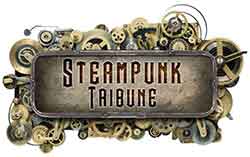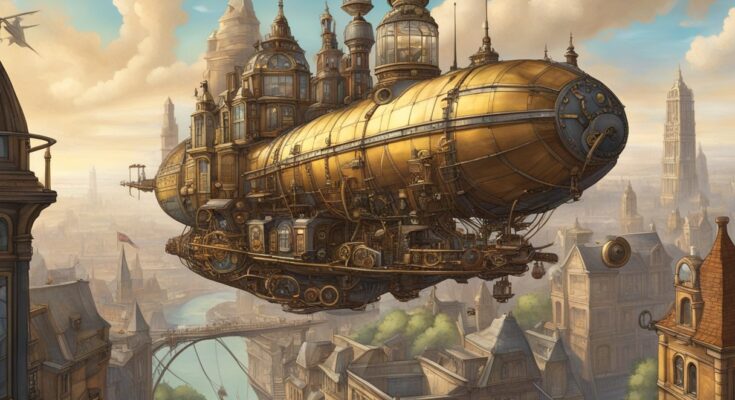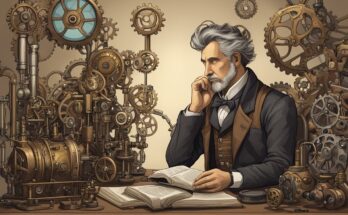Steampunk is a subculture that has gained popularity in recent years, characterized by a blend of Victorian-era aesthetics with modern technology. However, one aspect of steampunk that often goes overlooked is its use of anachronisms in media. Anachronisms are elements of a story that are out of place or time, intentionally or unintentionally. In the case of steampunk media, anachronisms are often used to create a sense of nostalgia for a time that never truly existed.
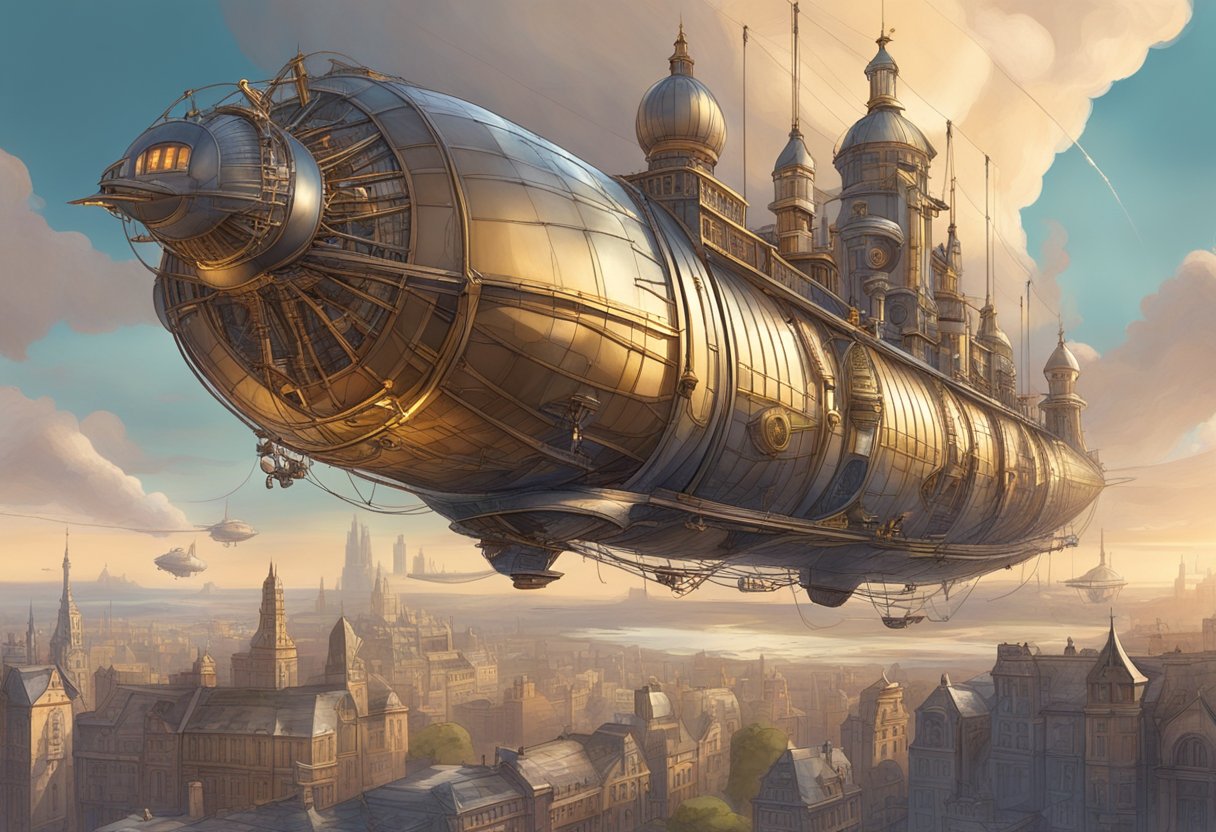
Steampunk media anachronism can be seen in various forms of media, including literature, film, and video games. For example, in the popular steampunk novel “The Difference Engine” by William Gibson and Bruce Sterling, the story is set in an alternate version of Victorian England where computers and advanced technology exist. In this way, the authors use anachronisms to create a sense of wonder and intrigue for readers.
The use of anachronisms in steampunk media is not limited to literature, however. In films such as “Wild Wild West” and “Sherlock Holmes”, anachronistic elements such as advanced technology and futuristic gadgets are used to create a unique blend of the past and present. This blending of eras is a hallmark of steampunk and is what makes it such a fascinating subculture.
Origins and Definitions
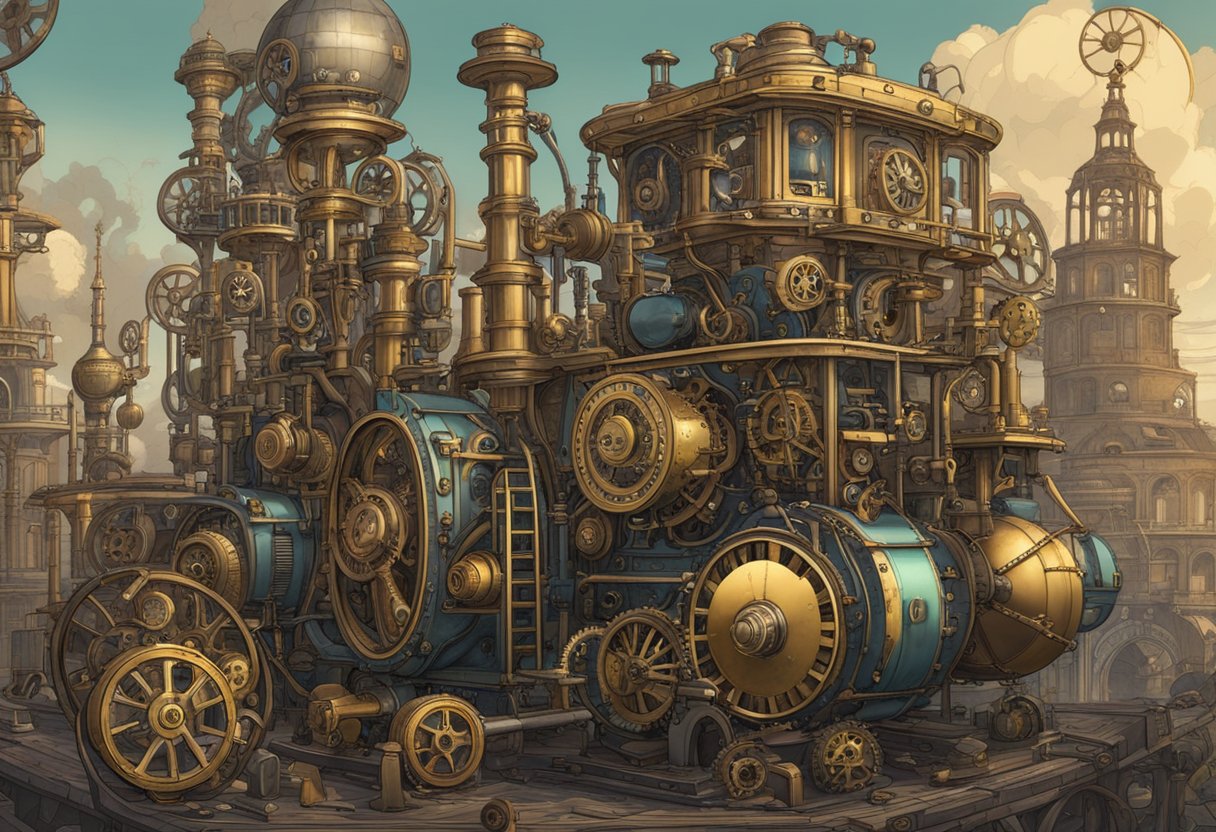
Steampunk Media Anachronism is a sub-genre of science fiction that combines historical elements with advanced technology. The term “steampunk” was first coined in the late 1980s by author K.W. Jeter to describe a style of science fiction that drew inspiration from the Victorian era.
Historical Context
The Victorian era, named after Queen Victoria of England, lasted from 1837 to 1901. It was a time of great change, marked by industrialization, urbanization, and scientific advancement. The era saw the development of many new technologies, including the steam engine, which powered much of the industrial revolution.
Steampunk Media Anachronism draws heavily on the aesthetics and culture of the Victorian era, with its elaborate clothing, ornate architecture, and fascination with science and technology. It often features an alternate history in which steam-powered machines and other advanced technologies are more prevalent than they were in reality.
Literary Roots
Steampunk Media Anachronism has its roots in the works of authors such as Jules Verne, H.G. Wells, and Mary Shelley. These writers explored the possibilities of science and technology in their works, often imagining futuristic inventions that were far ahead of their time.
One of the most influential works in the development of steampunk was William Gibson and Bruce Sterling’s novel “The Difference Engine,” which imagines a world in which Charles Babbage’s mechanical computer, the Analytical Engine, was successfully built and used to revolutionize society.
Overall, Steampunk Media Anachronism is a genre that combines historical elements with science fiction and fantasy to create a unique and intriguing world. Its popularity continues to grow as more and more people are drawn to its distinctive aesthetic and imaginative storytelling.
Aesthetic and Design
Steampunk is a subculture that embraces a unique aesthetic and design. It combines elements of Victorian-era fashion, industrial technology, and science fiction to create a distinct look and feel. This section will explore the different aspects of Steampunk design, including fashion elements, architectural influences, and art and craftsmanship.
Fashion Elements
One of the most recognizable aspects of Steampunk is its fashion. Steampunk fashion draws heavily from Victorian-era clothing, with corsets, top hats, and long coats being popular choices. However, Steampunk fashion also incorporates elements of industrial design, with gears, brass, and iron often used as accents. Goggles are a common accessory, both for their practicality and their aesthetic appeal.
Architectural Influences
Steampunk design also draws inspiration from Victorian-era architecture. Buildings with ornate details and intricate metalwork are often featured in Steampunk media. However, Steampunk also incorporates elements of industrial design, with exposed pipes and gears being common features. Wood is also a popular material, often used to create a sense of warmth and comfort.
Art and Craftsmanship
Steampunk design is not just about fashion and architecture – it also encompasses art and craftsmanship. Steampunk artists create intricate sculptures and installations using a variety of materials, including metal, wood, and glass. Steampunk jewelry is also popular, often incorporating gears and other industrial elements. Craftsmanship is highly valued in the Steampunk community, with many enthusiasts creating their own costumes and accessories by hand.
Overall, Steampunk design is a unique and fascinating subculture that draws from a variety of influences. Its combination of Victorian-era fashion, industrial design, and science fiction creates a look and feel that is both nostalgic and futuristic. Whether you’re a fan of Steampunk or simply curious about its aesthetic and design, there’s no denying its appeal and creativity.
Cultural Impact
Steampunk has had a significant cultural impact since its inception in the 1980s. It has spawned a vibrant subculture with its own unique fashion, music, and art. In addition, it has influenced a wide range of media and entertainment, including literature, film, and television. Moreover, it has provided a platform for political and social commentary.
Subcultures and Communities
Steampunk has given rise to a diverse and inclusive subculture that celebrates individuality and creativity. It has inspired a range of communities worldwide, from small local groups to large international organizations. These communities come together at events and conventions to share their love of steampunk and to showcase their artistic talents.
Media and Entertainment
Steampunk has inspired a wealth of literature, film, and television. It has provided a rich source of inspiration for writers and filmmakers, who have used its aesthetic and themes to create compelling stories. Moreover, it has influenced the music industry, with steampunk-inspired bands and musicians emerging worldwide.
Political and Social Commentary
Steampunk has also provided a platform for political and social commentary. It has been used to explore issues of class, gender, and power, as well as to critique contemporary society. It has also been used to promote alternative visions of the future, with steampunk writers and artists imagining worlds that challenge the status quo.
In conclusion, steampunk has had a significant impact on culture, inspiring subcultures, media, and political discourse. Its influence is likely to continue to grow, as new generations discover its unique aesthetic and themes.
Technological Imaginings
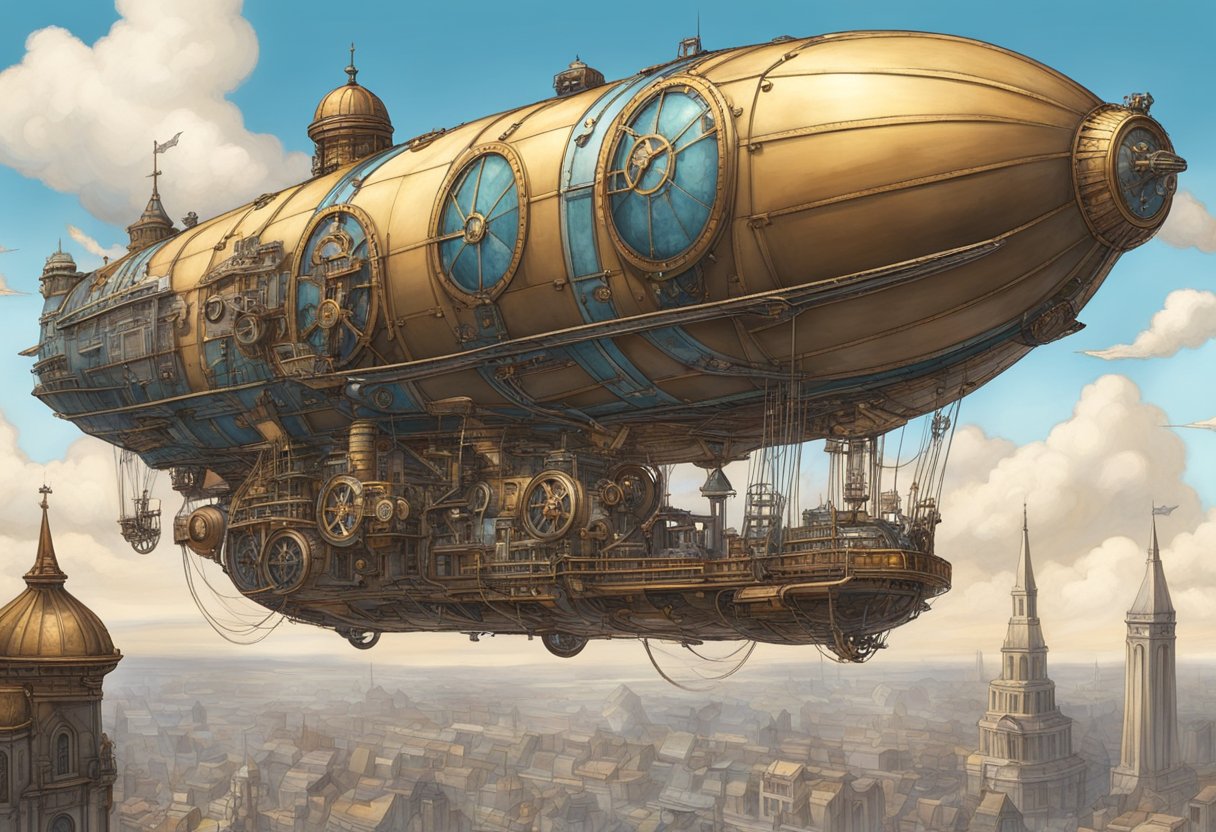
Retro-Futuristic Innovations
Steampunk media anachronism is a genre that blends the aesthetics and technology of the Victorian era with science fiction. It imagines a world where steam power and machinery are the primary sources of energy, and retro-futuristic innovations are the norm. These innovations are often inspired by the industrial revolution and the technological advancements of the time.
One of the most notable retro-futuristic innovations in steampunk media anachronism is the airship. Airships are a staple of the genre and are often depicted as majestic vessels that travel through the skies using steam power. They are often equipped with advanced technologies like telescopes, radio communication, and weapons.
Another retro-futuristic innovation commonly found in steampunk media anachronism is the mechanical prosthetic. In this genre, characters who have lost limbs or suffered other physical injuries can replace their body parts with steam-powered machinery. These prosthetics are often depicted as being more powerful than human limbs, giving the wearer enhanced strength and agility.
Steam Power and Mechanization
Steam power is a central theme in steampunk media anachronism. It is often portrayed as the primary source of energy that drives the machinery and innovations of the time. The use of steam power is also seen as a symbol of progress and industrialization.
Machinery is another important aspect of the genre. In steampunk media anachronism, machines are often depicted as being complex and intricate, with gears, pistons, and other mechanical components. These machines are often used for transportation, manufacturing, and war.
In conclusion, retro-futuristic innovations and steam power are two key themes in steampunk media anachronism. The genre imagines a world where technology has advanced in unique and interesting ways, blending the aesthetics of the Victorian era with science fiction. The use of steam power and machinery is central to the genre, and it is often seen as a symbol of progress and industrialization.
Influences and Evolution
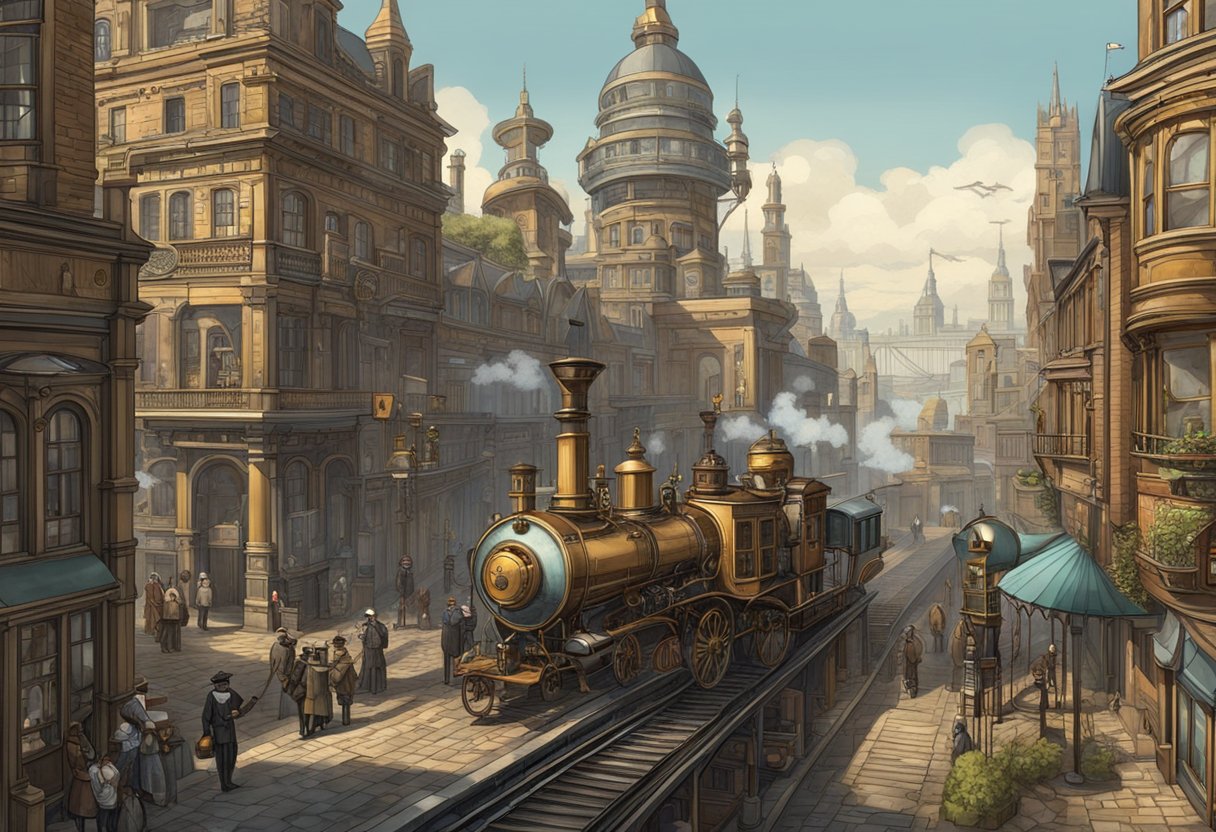
Historical Inspirations
Steampunk media anachronism is a genre that draws heavily on historical inspirations, particularly from the Victorian era and the Wild West. The genre is characterized by an alternative history that imagines a world where steam power and clockwork technology are the dominant forms of technology. This alternative history often takes place in Victorian England, but can also be set in other parts of the world during the 19th century.
The Victorian era was a time of great change and innovation, and many of the technological advancements of the time have been incorporated into steampunk media. For example, the use of steam power to drive machinery and transportation is a key feature of many steampunk stories. Other technological innovations, such as the telegraph and the phonograph, have also been incorporated into the genre.
The Wild West is another important historical inspiration for steampunk media. The rugged, lawless frontier provides a rich backdrop for stories of adventure and exploration. Many steampunk stories incorporate elements of the Wild West, such as cowboys, gunslingers, and outlaws.
Contemporary Adaptations
While steampunk media is rooted in historical inspirations, it has also evolved to incorporate contemporary adaptations. One of the most notable adaptations is the concept of neo-Victorianism, which imagines a world where Victorian-era values and aesthetics are still prevalent in modern times.
Another important adaptation is the use of alternative history. Steampunk stories often imagine a world where historical events have played out differently, leading to a world that is vastly different from our own. This allows writers to explore themes of power, politics, and social change in new and interesting ways.
Overall, steampunk media anachronism is a genre that has evolved over time to incorporate a wide range of influences and adaptations. From its historical inspirations to its contemporary adaptations, the genre continues to captivate audiences with its unique blend of technology, history, and imagination.
Community and Lifestyle
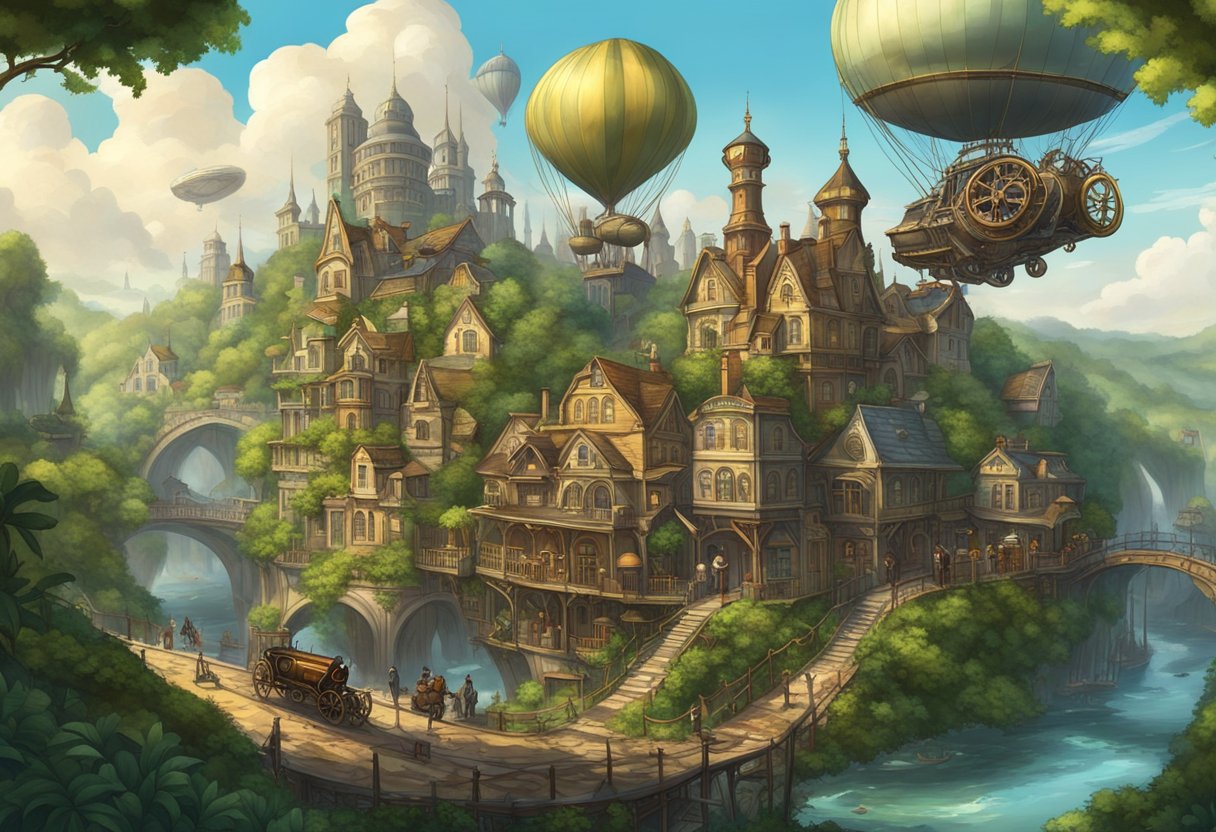
Steampunk is more than just a style or genre of media; it is a community and a lifestyle. Steampunk enthusiasts come from all walks of life and share a passion for the unique and the unusual. This section will explore two key aspects of the Steampunk community: fashion and personal expression, and events and gatherings.
Fashion and Personal Expression
One of the most recognizable aspects of Steampunk is its fashion. Steampunk fashion is a unique blend of Victorian-era clothing, industrial design, and futuristic elements. People in the Steampunk community often use fashion as a way to express their individuality and creativity. They may create their own costumes or modify existing clothing to fit the Steampunk aesthetic.
Artists and performers within the Steampunk community often use fashion to enhance their work. For example, a musician might wear a Steampunk-inspired outfit while performing to help create a more immersive experience for the audience.
Events and Gatherings
The Steampunk community is known for its lively events and gatherings. These events can range from small meetups to large conventions, and they often include a variety of activities such as music, art, and fashion shows.
One of the most popular Steampunk events is the Steampunk World’s Fair, which takes place annually in New Jersey. This three-day event attracts Steampunk enthusiasts from around the world and features a wide range of activities, including live music, art exhibits, and fashion shows.
Goth and subculture enthusiasts can also find a home within the Steampunk community. Many Steampunk events have a gothic or alternative vibe, and Steampunk fashion often incorporates elements of goth culture.
Makers are also an important part of the Steampunk community. Many Steampunk enthusiasts create their own costumes, props, and gadgets, using a variety of materials and techniques. This DIY ethos is a key aspect of the Steampunk lifestyle and helps to foster a sense of creativity and community among its members.
Overall, the Steampunk community is a diverse and welcoming group of people who share a passion for the unique and the unusual. Whether you are a fan of Steampunk media or simply interested in exploring a new subculture, there is something for everyone within the Steampunk community.
Philosophical and Ethical Dimensions
Anachronism and Nostalgia
One of the key aspects of Steampunk Media Anachronism is the use of anachronistic technology and aesthetics. This is often accompanied by a sense of nostalgia for a bygone era. This combination of anachronism and nostalgia raises interesting philosophical and ethical questions.
On the one hand, Steampunk Media Anachronism can be seen as a celebration of the past and a rejection of the present. This can be seen as problematic, as it may perpetuate a romanticized view of history that ignores the negative aspects of the past. Additionally, it may be seen as a rejection of progress and a resistance to change.
On the other hand, Steampunk Media Anachronism can be seen as a way to explore and critique the present through the lens of the past. By imagining a world where technology developed differently, Steampunk Media Anachronism can highlight the flaws and limitations of our current technology and society. It can also provide a space for marginalized voices to imagine a world where they are empowered and valued.
Utopian vs. Dystopian Views
Another philosophical and ethical dimension of Steampunk Media Anachronism is the tension between utopian and dystopian views. Some Steampunk Media Anachronism works present a utopian vision of a world where technology has solved all of humanity’s problems. Others present a dystopian vision of a world where technology has only made things worse.
Both utopian and dystopian views have their strengths and weaknesses. Utopian views can inspire hope and provide a vision for a better future. However, they can also be overly optimistic and ignore the complexities of human nature and society. Dystopian views can provide a warning about the dangers of unchecked technology and power. However, they can also be overly pessimistic and ignore the potential for progress and change.
Overall, the philosophical and ethical dimensions of Steampunk Media Anachronism are complex and multifaceted. By exploring these dimensions, we can gain a deeper understanding of the ways in which Steampunk Media Anachronism reflects and critiques our society and our relationship with technology.
Creative Expression and Media
Literary Works
Steampunk literature is a subgenre of science fiction and fantasy that typically takes place in an alternate version of the Victorian era. It often incorporates themes of adventure, exploration, and invention, as well as the use of steam-powered technology and machinery. Examples of popular steampunk literary works include “The Difference Engine” by William Gibson and Bruce Sterling, “Leviathan” by Scott Westerfeld, and “The Iron Duke” by Meljean Brook.
Visual and Performance Arts
Steampunk art and performance often incorporate elements of the Victorian era, such as fashion, architecture, and design, with futuristic and fantastical elements. This can include visual art such as paintings and sculptures, as well as performance art such as music and theater. Steampunk fashion often includes corsets, top hats, and other Victorian-era clothing, along with accessories such as goggles, gears, and clockwork mechanisms.
Film and Television
Steampunk has also made its way into film and television, with a number of notable examples including “Wild Wild West,” “The League of Extraordinary Gentlemen,” and “Sherlock Holmes.” These films often incorporate elements of the Victorian era, along with steam-powered technology and fantastical elements. Steampunk has also been featured in television shows such as “Doctor Who” and “Warehouse 13.”
Overall, steampunk is a genre that allows for a great deal of creative expression and imagination. Whether through literature, visual and performance arts, or film and television, steampunk offers a unique and exciting way to explore the past while imagining the future.
Global Reach and Community
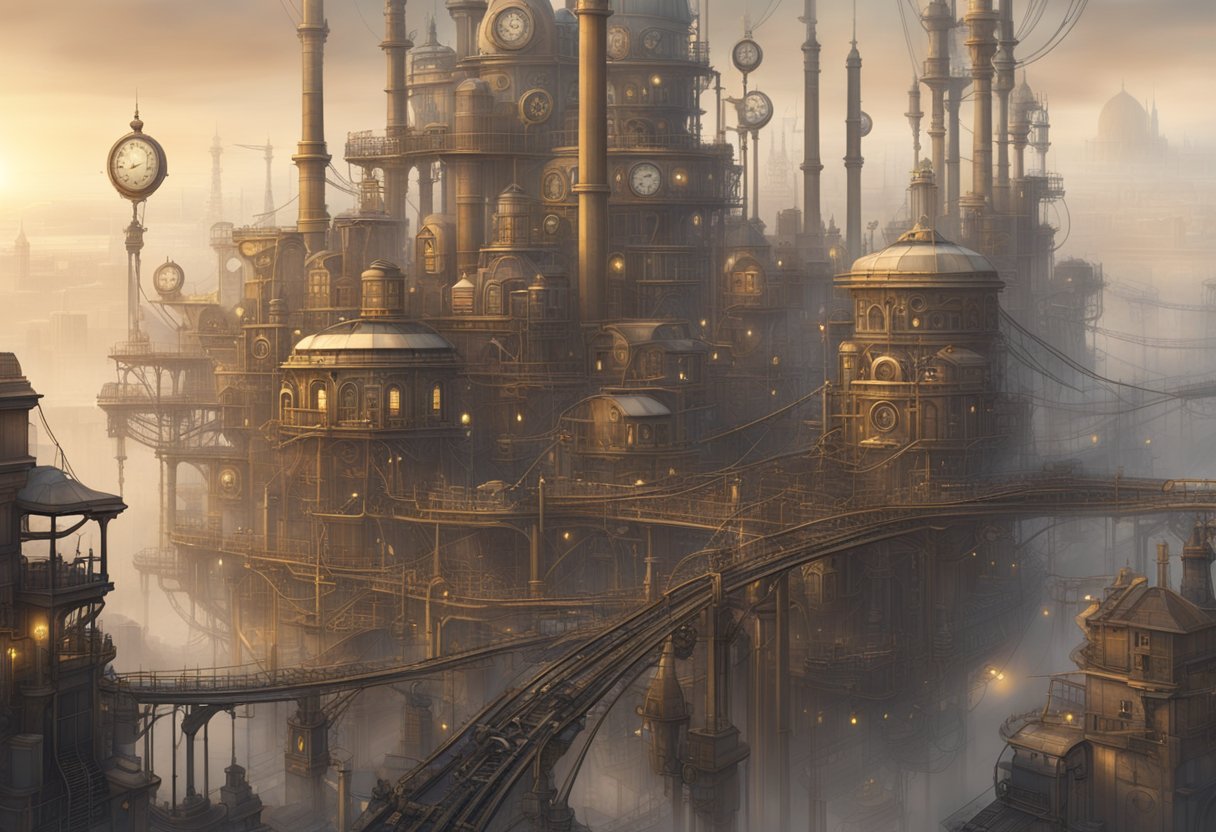
Steampunk media anachronism has gained a significant following worldwide. The community is composed of people from different backgrounds, cultures, and age groups. This section will explore the international influence and online presence of the Steampunk community.
International Influence
The Steampunk community has a global reach, with events and conventions held in different countries. These events provide an opportunity for enthusiasts to share their passion for the genre and showcase their creativity. The events also attract a diverse audience, including artists, writers, musicians, and cosplayers.
Steampunk has also influenced other forms of media, such as literature, film, and television. Many popular books and movies have incorporated Steampunk elements, such as “The League of Extraordinary Gentlemen,” “Wild Wild West,” and “Sherlock Holmes.”
Online Presence and Social Media
The Steampunk community has a strong online presence, with numerous websites, forums, and social media platforms dedicated to the genre. These platforms provide a space for enthusiasts to share their work, discuss ideas, and connect with others who share their passion.
Social media has played a significant role in the growth of the Steampunk community. Platforms such as Instagram, Twitter, and Facebook have allowed enthusiasts to share their work with a wider audience and connect with like-minded individuals from around the world.
In conclusion, the Steampunk community has a global reach and a strong online presence. The community provides a platform for enthusiasts to share their work and connect with others who share their passion for the genre. The community’s influence can be seen in various forms of media, and its popularity continues to grow.
Future Directions
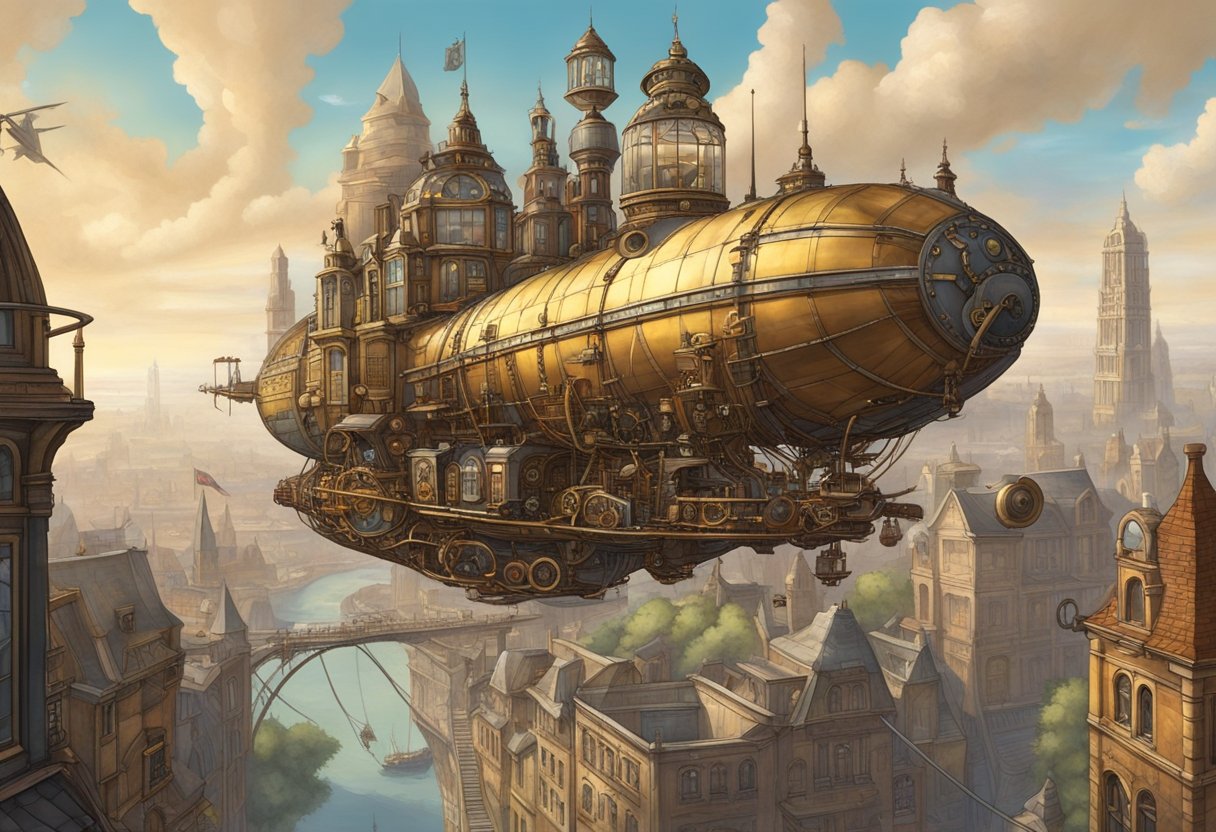
As Steampunk continues to evolve, it is expected that new innovations and technologies will be introduced that will further enhance the genre. The future of Steampunk will continue to be shaped by both cultural and artistic trends, as well as advancements in technology.
Innovation and Technology
One of the most exciting aspects of Steampunk is the way it blends the past with the future. As technology continues to advance, it is likely that new and innovative ways of incorporating Steampunk elements into modern technology will emerge. For example, there may be an increase in the use of Steampunk-inspired designs in the development of new gadgets, such as smartphones and tablets.
Another area where Steampunk may continue to evolve is in the field of transportation. With the popularity of airships in Steampunk stories, it is possible that we may see a resurgence of interest in air travel. This could lead to the development of new airship designs that incorporate Steampunk elements.
Cultural and Artistic Trends
As with any genre, Steampunk is shaped by cultural and artistic trends. One trend that is likely to continue is the use of animal and fantasy world elements in Steampunk stories. This could lead to the creation of new Steampunk creatures and characters, as well as the incorporation of magic and other speculative fiction elements.
Another trend that may continue to shape Steampunk is the use of alternate history. Steampunk stories often take place in a world where history has taken a different path, and this trend is likely to continue as writers and artists continue to explore different possibilities.
Overall, the future of Steampunk looks bright, with new innovations and trends continuing to shape the genre. Whether it’s through the use of new technologies or the incorporation of cultural and artistic trends, Steampunk is sure to continue to captivate readers and fans alike.
